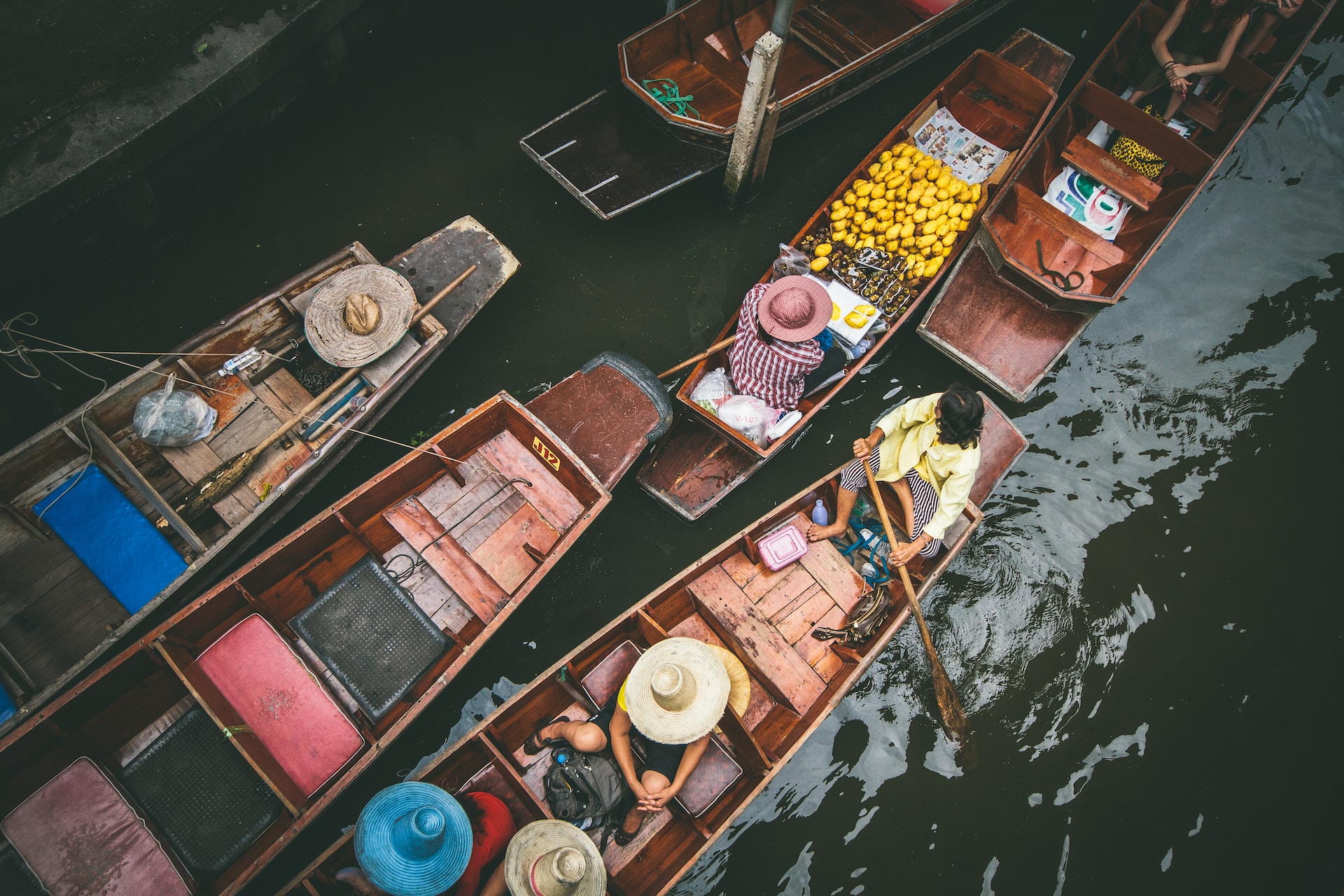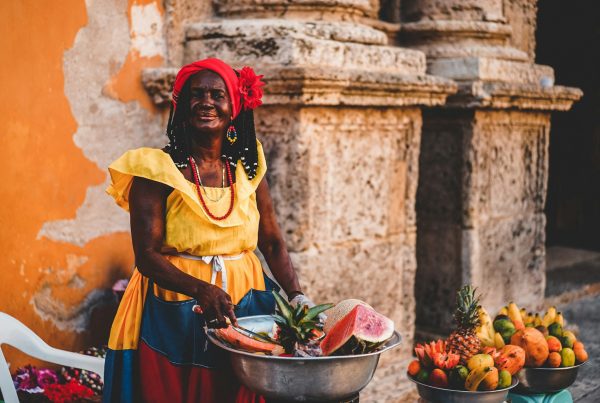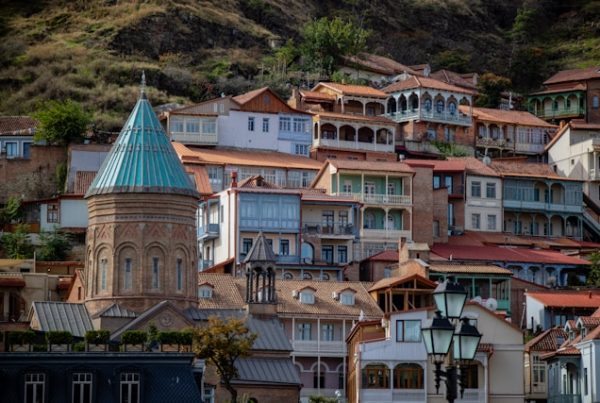Newsletter 153 – 07.21.2023
Southeast Asia, with its enormous cultural and economic diversity, and its high population density, undoubtedly represents enormous interest for fruit producers in the Southern Hemisphere. With a total population of 72 million inhabitants, and an area of 515,105 square km; Thailand is the 4th most populous country in ASEAN (20th worldwide) and is the 21st economy worldwide considering its GDP.
Thailand, historically known as the Kingdom of Siam, has the distinction of being the only country in the region to never have been colonized by a European power. 75% of its population is of Thai ethnicity, followed by Chinese (14%) and Malays (3%). The rest of the population is made up of other ethnic minorities and a growing immigrant community. Buddhism is the majority religion, practiced by 95% of the population.
The capital, Bangkok, is the largest city, with 10.5 million inhabitants. It functions as the economic and financial center of the country. The other cities are rather small. In addition, half of the population lives in rural areas. Inequality is very high in the country. The middle class is very limited and there is a high contrast between the upper and lower classes. In 2019, a Credit Suisse report ranked this country as the country with the greatest economic inequality within the ASEAN member.
Thailand's economy is open market and heavily focused on exports. The main activities are the industrial and tertiary sector, within this tourism acquires special importance. In the year 2022 it was the 8th most visited country in the world, with 40 million tourists. And even more growth is projected. In the primary sector, the production of sugar cane, rice, cassava, palm oil, corn and natural rubber stands out.
Due to its humid tropical climate, this country stands out in the production of fruits such as mangoes, pineapples, papayas, bananas, lychees, durians and others. It is a net exporter of fruit, with a surplus of 3,051 million dollars in 2020.
However, due to the characteristics of the different consumer groups, there is a growing demand for imported foods. The main suppliers are its regional partners, China, Vietnam and Indonesia. Despite this, in recent years the trade dynamics with the countries of the southern hemisphere, such as Chile and Peru, has increased notably, driven mainly by the signing of free trade agreements.
The demand for imported fruits is mainly supported by two groups. The proper middle to upper income Thai population, which is concentrated in Bangkok. And on the other, tourists and foreigners living in Thailand.
The community of expats (foreigners residing in the country) is very relevant, especially in cities like Bangkok, Phuket, Chonburi and other touristic cities. The most significant communities are American, Japanese, Korean, Chinese, German, French and British. On the other hand, tourists, by supporting a large part of the HORECA demand, are a relevant sector for consumption. Within this group, foreigners and tourists of Western origin tend to consume more fruit than the Eastern ones, while they tend to be more informed consumers and willing to pay more for a higher quality product.
Despite the fact that, during the pandemic, the demand for imported fruits showed a slight reduction, it had been experiencing sustained growth. Sales are expected to increase an annual average of 2.8% until 2025. In contrast to locally produced fruits, imported fruits are located within the "Premium" market.
An interesting feature of the Thai market is the strong preference for fresh products over processed ones, as they are perceived as healthier. For example, the consumer only resorts to buying canned fruits if the fresh presentation is out of season. In the younger segment, the demand for certified organic fruit has been gaining momentum.
Another special feature shared with neighboring countries (such as China) is the growing tradition of gifting high-quality fruit for special occasions. It is increasingly common to find specially decorated boxes or baskets on the market. The most sought after fruits for this purpose are cherries, grapes and kiwis. For South American suppliers, the main trade opportunities are concentrated in grapes, mandarins and oranges, avocados, and blueberries. Chile and Peru, specifically, are among the top 10 fruit supplying countries, although far behind the closest suppliers (China, Vietnam, Indonesia).
Blueberries
Is a fruit recently introduced in this market, and it is considered a luxury fruit due to its high price. That is why the demand is sustained in the middle to high income sectors, mainly among young people who value healthy food. In this case, for the consumer its origin is not as important as its quality and size (Jumbo size is preferred). A curious characteristic is the consumer's preference for buying fruit that exhibits a high amount of bloom (“white powder”), since it gives the sensation of greater freshness.
The blueberry supply is maintained throughout the year due to alternating the American season with the Austral one. The main providers are Australia, New Zealand and Peru.
Grapes
Given the geographical proximity and its low prices, the main supplier of fresh grapes is China, contributing 70% of imports. China has a permanent supply for almost the entire year, although the peak supply occurs during the second half of the year. In this sense, the southern grapes find a favorable sales window in the first half of the year.
The times of higher consumption of grapes in Thailand are during the New Year, Christmas and Songkram (Buddhist New Year) celebrations. In these seasons, grapes are usually delivered in gift baskets. Consumption also skyrockets during the summer, due to the higher number of tourists.
Avocado
It is another fruit to which the Thai taste seems to have accustomed. New Zealand is the main supplier. The New Zealand season runs from September to March. Thailand, on the other hand, has an incipient but promising local production, concentrated in the northern and northwestern areas of the country, with the harvest starting in July and peaking in September. However, the Peruvian Hass avocado has entered the country since 2019.
Apples
It is perceived as a “Premium” fruit. It is imported from the northern hemisphere during October-March (from the United States, France and China), and uses southern suppliers the rest of the year. In this segment, the main suppliers are Chile, Australia and New Zealand.
Citrus Fruit
Thailand has a large local citrus production, mainly oranges. Even so, due to the warm climate, a decrease in orange production has been noted during the last decade, due to phytosanitary problems.
Mandarins are the third most important citrus product (behind oranges and grapefruit). The most produced variety is the Bang Mot. However, Thailand is together with the Philippines the main buyer of mandarins, Australia being practically the only supplier.
In the specific case of citrus, the main barrier to imports are the strict phytosanitary protocols.







